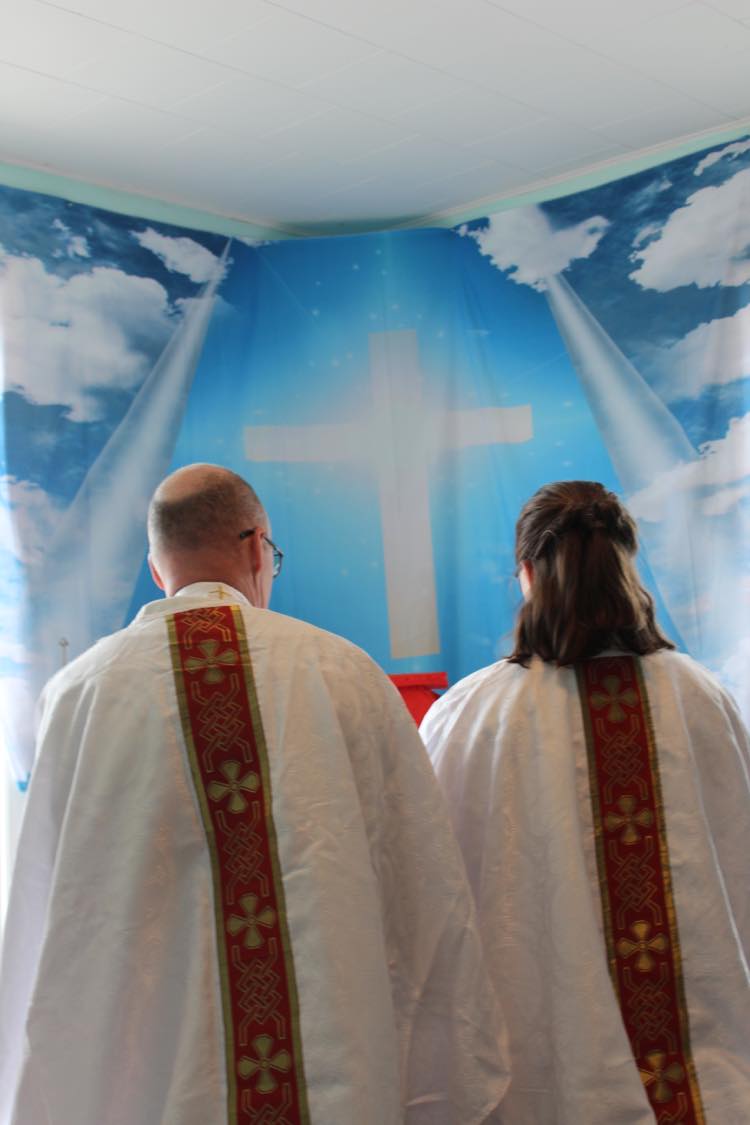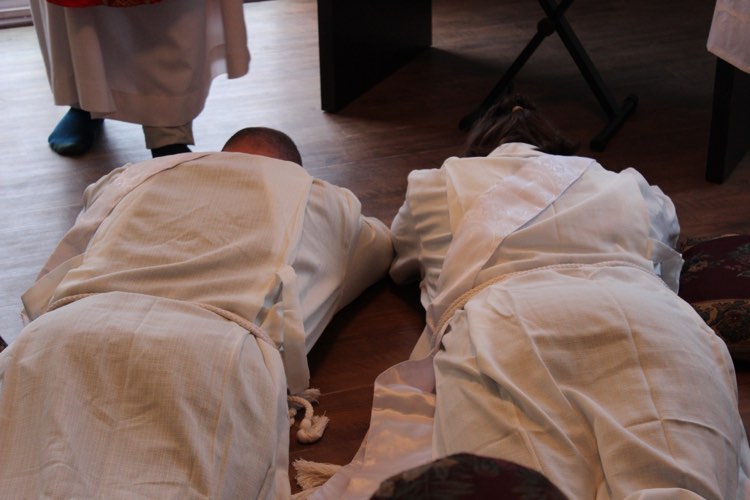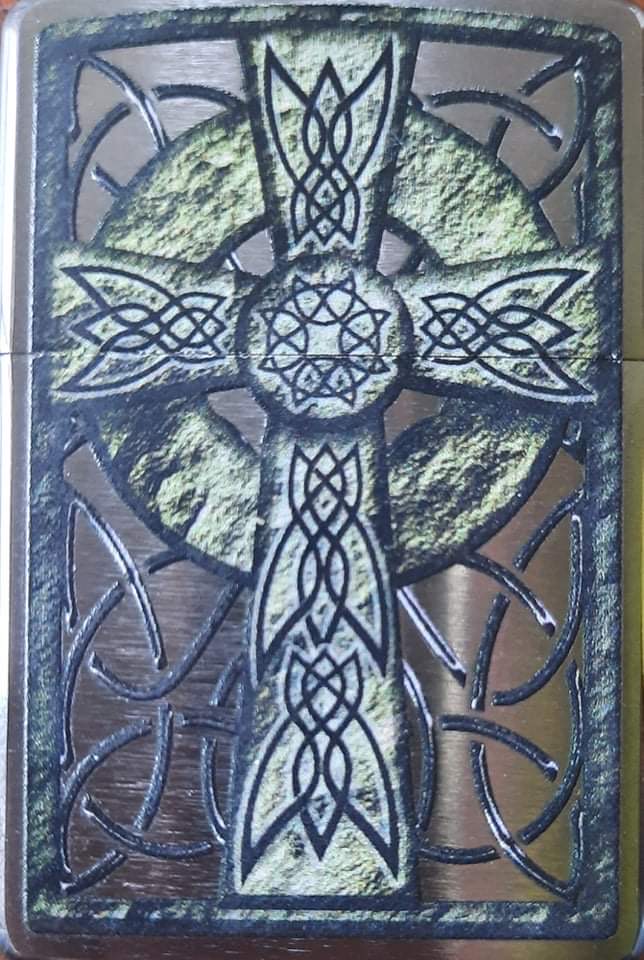- Home
- Seminary Studies
- The Didache
Simply Catholic and Welcoming You
The Didache
The Didache is considered the first example of the genre of church orders. The Didache is an anonymous pastoral manual which reveals much about how Jewish Christians saw themselves and how they adapted their Judaism for gentiles. It is similar in several ways to the Gospel of Matthew.
The Didache (translated as treatise or teaching) is considered part of the group of second-generation Christian writings known as the Apostolic Fathers. The work was considered by some church fathers to be a part of the New Testament while being rejected by others as non-canonical.
Nevertheless it is a delightful little manuscript and makes good reading for all Christians today. In total it is only around 2000 words.
In the end, it was not accepted into the New Testament canon. However it is included in the broad canon of the Ethiopian Orthodox Church.
Lost for centuries, a Greek manuscript of the Didache was rediscovered in 1873 by Philotheos Bryennios, Metropolitan Bishop of Nicomedia. It's a brief, early Christian work in Koine Greek, providing instruction on matters like liturgy, behavior, and eschatology (the part of theology concerned with death, judgment, and the final destiny of the soul and of humanity).
The Greek text of the Didache has only survived in a single, 11th-century Greek manuscript, the Codex Hierosolymitanus.
There are claims that its earliest layer may have originated in the decree issued by the Council of Jerusalem in 49–50 a.d., that is, by the Jerusalem assembly under James the brother of Jesus. If so, it predates the gospels of the new testament.
The Didache does seem to show that the practices of the Catholic Church today are remarkably similar to that of the earliest Christians, including those who were taught directly from the Twelve, themselves.
Why was the Didache removed from the Bible?
It appears it didn't adhere to 4th-century orthodoxy as outlined by the Council of Nicaea. This may be one of the reasons why the Didache was left out of the New Testament canon. Additionally, the material it shares with Matthew may have made it redundant, and it may have seemed more Jewish than some 4th-century Christians wanted.
In order to have the Christian religion accepted widely by Romans, it was important that it not seem too much like it came from a civilization they considered as inferior slaves.
The Didache and Other Books Were Removed from the Bible
The removal of books from the Bible, specifically the inclusion or exclusion of texts in different traditions, is a larger and more complex issue with various factors influencing the final canon. Some books, like those in the Apocrypha/Deuterocanon, were initially excluded from some versions of the Bible due to their authorship, content, or perceived lack of authority.
Other texts were excluded due to their historical context, lack of recognition, or potential for theological discord. The specific reason for their removal often varies depending on the religious tradition and the historical context of the decision.
Let’s examine these reasons for exclusion further.
Lack of Apostolic Authorship:
Some books were excluded because they were not believed to be written by apostles or other figures considered authoritative in the early church. Most of the excluded books were written in Greek, while the official Hebrew Old Testament was considered the primary source.
Content and Depth:
Some books were considered to be too shallow in their spiritual content or lacked the theological strictness desired in canonical texts.
Historical Context and Recognition:
Some texts were not widely recognized or accepted within early Christian communities, leading to their eventual exclusion or, more aptly put, to their never being included.
Potential for Theological Discord:
Certain books were excluded due to the potential for theological controversies or interpretations that differed from the dominant theological views of the time. As the church continued to become more organized, agreements had to be reached and compromises made over which works were acceptable and which were not.
Political and Social Factors:
In some cases, political or social factors influenced the decisions regarding which books to include or exclude. Again, did they ‘appear’ too Jewish for the Romans to accept. Were they recognized all along? Would the Jewish founders accept them and so on.
Early Christian Development:
The process of forming the biblical canon was gradual, and different communities had different views on which texts should be included.Here are the ‘final’ outcomes;
The Apocrypha/Deuterocanon:
(Deuterocanon Meaning: "Of, pertaining to, or constituting a second canon". So these ‘second works’ are considered equal to the other works in the bible.)
These books, which are included in the Old Testament of Catholic and Orthodox versions of the Bible, were omitted from the Protestant Bible due to their authorship, content, and perceived lack of widespread recognition. Including;
- Tobit
- Judith
- Baruch
- Ecclesiasticus (Sirach)
- Wisdom
- First and Second Maccabees
- The Greek additions to Esther and Daniel.
Pseudepigrapha:
(Meaning; fake or pseudonymous writings) This collection of historical biblical works is considered fiction by many scholars and was not included in the Bible. These include;
- 3rd Maccabees.
- 4th Maccabees.
- Assumption of Moses.
- Ethiopic Book of Enoch (1 Enoch)
- Slavonic Second Book of Enoch.
- Book of Jubilees.
- 3rd Baruch.
- Letter of Aristeas.
Early Christian Gnostic Gospels:
(Gnostic meaning inner knowledge) While these Gospels were written by early Christians, they were excluded from the Bible because they were not considered to be part of the mainstream Christian tradition. These texts include the Gospel of Thomas and the Gospel of Mary
In summary:
The process of forming the Bible's canon involved various factors, including theological considerations, historical context, and social and political influences. The exclusion of certain books, like those in the Apocrypha or Pseudepigrapha, was often due to their perceived lack of authority, content, societal pressures or historical recognition within the early church.
Today we have many versions of the bible even within the catholic realm. In addition to the 73 books of the Roman/Latin Rite Catholic Bible, the Orthodox Church adds three more books to their canon. By far, the largest canon of all is found in the Ethiopic Church, whose Bible totals 81 books.
Depending on which version of today's bible you are looking at, a total of seventeen books may have been ‘removed’ or been refused inclusion in the first place.
Recent Articles
-
Catholic-Confession
Apr 19, 25 08:53 PM
Full breakdown of the Catholic Confession Sacrament of Reconciliation -
Ordination, incardination and dismissal of clergy
Mar 03, 25 06:47 PM
Overview of Ordination to Holy Orders, incardination and dismissal of clergy -
Catholic Last Rites
Mar 03, 25 06:41 PM
An explanation of the Catholic Last Rites and Anointing of the Sick


